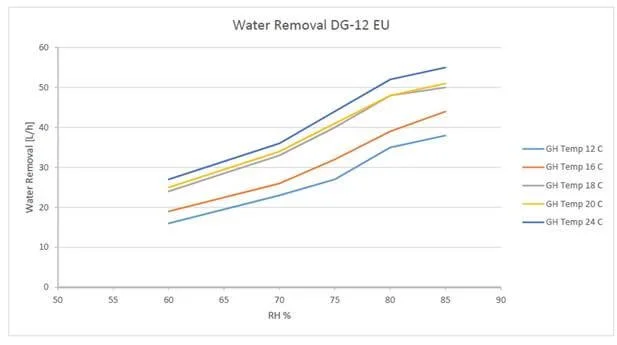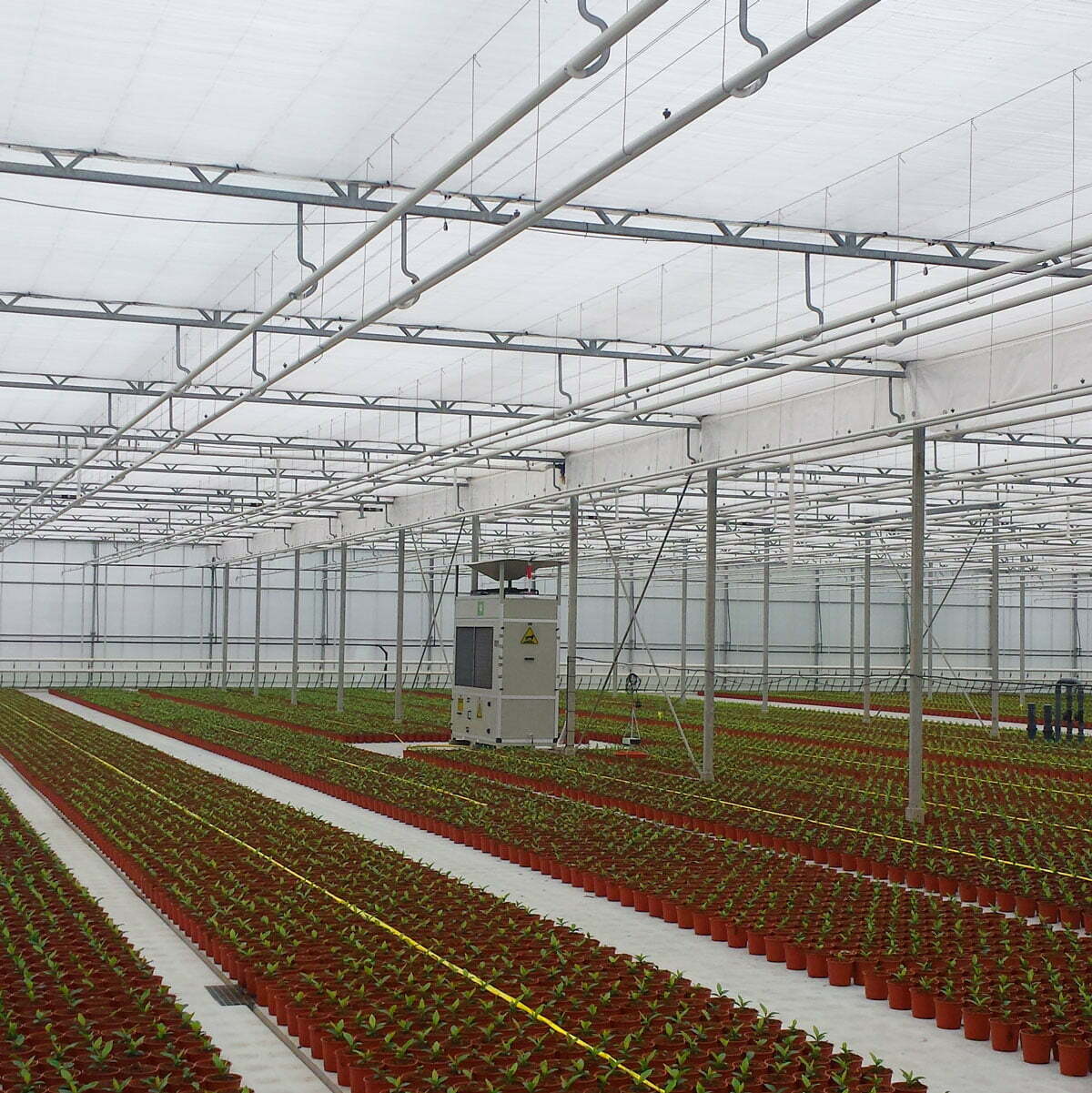Greenhouse Tips From Our Experts – Growing With Dehumidifiers
DryGair’s team of experts includes agronomists and agricultural climate engineers with decades of experience from Israel’s top agricultural research facilities.
With the DryGair solution, they have brought their vision to life. A vision for controlling humidity in a way that both saves tremendous amounts of energy, and dramatically improves crop quality and quantity.
We interviewed our leading experts, Dr. Avraham Arbel and Shabtai Cohen, to get their top tips for greenhouse growing and humidity control.
Our Experts’ Greenhouse Tips:
1. Dehumidification – an earlier start to the day:
“Most greenhouses start the day wet, due to high nighttime humidity. Dehumidifying during the night allows farmers to get to work immediately with sunrise, instead of waiting for the plants to dry off in the sunlight.”
2. Dry vs. wet weight:
“The dry weight of harvested cannabis is approximately 20% of the wet weight. The remaining 80% is water which needs to be dried in the drying room.”
3. Condensation on the surface:
“Condensation on the surface of fruit is much more alarming than condensation on the surface of leaves. Leaves have less mass than fruit, therefore they warm up quicker. Fruit remains cooler much longer, causing condensation to continue, even under heavy fanning.”
4. One dehumidifier vs. many:
“Using one centralized dehumidifier instead of many reduces costs such as piping, wiring, electricity and maintenance, while allowing the creation of completely uniform conditions throughout the entire space.”
5. Drying rooms:
“Inside a drying room with conditions of 50-64oF and 60% relative humidity on average, optimal drying should take approximately one week.”

6. When should you dehumidify artificially?
“Artificial dehumidification should be done when there is no alternative: during cold or hot nights, or whenever outdoor humidity levels exceed the optimal greenhouse conditions. In tropical climates, this is a year-round issue.”

7. Indoor growing:
“Completely controlled indoor grow operations still need to periodically introduce external air in order to reduce ethylene buildup, which causes plants to age as well as other unwanted side effects.”
8. Why should a greenhouse be closed at certain times?
“Just like closing the window when air-conditioning a home. If the greenhouse air is being treated for temperature or humidity, the outdoor air flowing in undoes the treatment, maintaining the need to invest energy and resources in an attempt to keep re-creating the desired conditions.”
9. Relative humidity:
“High relative humidity, in and of itself, does not pose a risk in the growing space. It is the fine line between high relative humidity and condensation which raises the need to create a safety margin.”
10. Where does humidity come from in a closed greenhouse?
“Even in a completely closed greenhouse, humidity continues to build up, if untreated, due to the constant transpiration from the plants themselves.”
11. Dangerous hours:
“The most crucial hours, in regard to humidity, are during the afternoon, when the greenhouse is still warm and the sun is shining. The evening temperature drop could quickly bring the air to saturation, causing large drops of water, and even fog, to appear.”
12. Simple energy reduction methods:
“Reducing energy loss is the easiest way to reduce energy costs. Properly insulating the greenhouse, reducing heat lost through the walls and ceiling can lead to dramatic reductions. One proper thermal screen can reduce 65% of the heat lost through the ceiling; multiple screens may reduce up to 90%.”
Additional methods to improve energy efficiency can be found here
13. Evapotranspiration:
“Evapotranspiration caused by early morning sun rays could easily condense on the leaves and especially the fruit, which are still cool from the night.”
14. Cheaper solutions often end up being the most expensive methods:
“Simple air conditioners are not built to work consistently, turning maintenance and breakdowns to a regular occurrence. Heavy duty air conditioners and dehumidifiers operate using larger heat exchangers, allowing them to run constantly over long periods with much less down-time.”
15. Risky hours:
“The critical hours to avoid condensation in a greenhouse are approximately one hour before to sunset to two hours past, and two hours before sunrise, until three hours past”
16. Greenhouse ceiling temperature – a rough measurement:
“The temperature of a greenhouse ceiling is the weighted average of indoor and outdoor temperatures. The temperature is usually affected roughly by – 1/3 indoor air and 2/3 outdoor air.”
17. Temperatures of fruits vs. leaves:
“It is important to remember that in a greenhouse the temperature of fruits and vegetables in the morning is approximately 2-4oC less than the coldest part of the structure during the night.”
18. Thermal radiation is not limited to daytime:
“Though it can’t be seen, thermal radiation exists in the dark as well. Reflective materials may be effective in blocking this radiation, or rather keeping it inside, and should be utilized during night-time as well.”
19. Maximizing radiation absorption and expulsion potential:
“The potential of radiation absorption is equal to expulsion in any material. While black surfaces absorb radiation well, they expel it equally well. Utilizing screens made of different materials during different times of the day allows radiation to be block or harnessed with greater efficiency.”
Still debating whether thermal screens are for you? Check out our tips
20. Plant transpiration is heightened at dawn:
“During the first hours of sunlight or close to sunset, plants transpire most effectively, meaning the amount of water transpired, in relation to energy received, is at its peak. This is the riskiest time of day when it comes to humidity build up and condensation within the greenhouse.”
21. Heat loss reduction:
“Reduction of heat loss through the exterior of the greenhouse can be done using thermal screens. One clear screen can reduce this by up to 60%, an additional screen can push the percentage up to 75% and a third screen can help reduce heat loss by as much as 90%.”
22. Optimal levels of radiation:
“The optimal levels of radiation for cannabis cultivation are around 400-600 w/m2 (watt per square meter), roughly the equivalent of 800-1200 µmol m-2 s-1. These ranges are like those optimal for tomato plants.”
23. Optimal air CO2 levels:
“The optimal air CO2 levels for cannabis cultivation are roughly 750 PPM.”
24. Climate parameters to include in a survey for the planning of a greenhouse:
- Temperature
- Wind speed and direction
- Humidity
- Radiation
- Natural day length
- Rainfall
25. Geographic parameters to include in a survey for the planning of a greenhouse:
- Topography
- Cardinal directions of structures (east, west, north, south)
- Distance between structures
- Drainage
- Distance from residential areas (potential odor complaints)
26. Plant transpiration during the night:
“The humidity in the greenhouse is a product of plant transpiration during the night. High humidity levels inhibit the transfer of nutrients. Reducing humidity increases the transfer of nutrients – from the roots, through the leaves and flowers, to the air. In cannabis, this is of great importance as the buds tend to lack nutrients such as calcium and boron.”
27. Cannabis plant size:
“Cannabis plant size is determined during the vegetative phase, earlier transition to flowering (12-hour days) will produce smaller plants.”
28. Plants placement:
“Inside a greenhouse, growers should place cannabis plants approximately 80cm above the ground, to allow airflow from all directions. Plants must have enough space for radiation penetration, including radiation reflected from the ground, taking the full size of a mature plant into consideration.”
29. High nighttime temperatures:
“Tomatoes are very sensitive to high nighttime temperatures. To ripen properly, tomatoes require temperatures of under 23oC, for at least several hours during the night.”
30. Radiation levels:
“For greenhouse cultivation purposes, radiation levels can be 30-40% lower than optimal during the winter, even in warm and temperate climates regions. In northern countries, this gap widens further.”
31. Cannabinoid production:
“High nighttime temperatures lead to decreased cannabinoid production.”
32. Botrytis & alternaria:
“Both alternaria and botrytis (bud rot) cause buds to turn brown inside, making it difficult to differentiate the two. The major differentiating point is that alternaria appears in high temperatures as well. Botrytis is usually found during winter or in colder climates.”
33. Soil heat radiation:
“Soil radiates heat during the night, but concrete gives off even more heat. Materials such as sawdust effectively isolate the ground to lower temperatures following hot days.”
34. Secondary metabolites:
“Secondary metabolites produced by cannabis are likely created by the plant to defend against stress. Elicitation is the use of stress in order to increase the production of these compounds. Elicitation may include changing fertilizer, light spectrum, temperature, humidity and more.”
Our expert’s greenhouse tips are a response to the previously posted “Humidity woes – Common Greenhouse Humidity Related Problems”.







